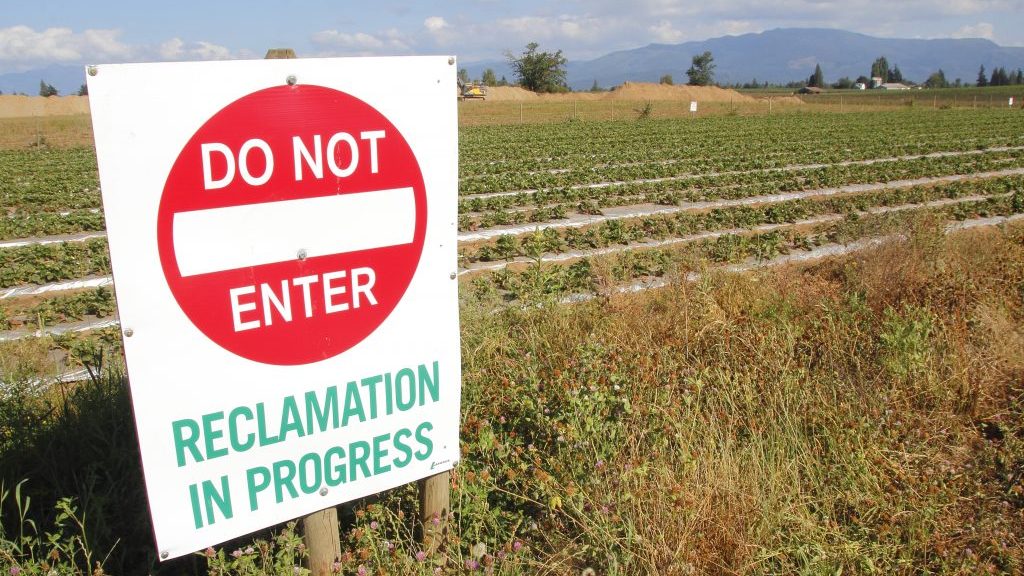The Land Reclamation International Graduate School (LRIGS) at the University of Alberta recently were victorious at the recent Emerald Awards in the post-secondary education category.
The Emerald Awards recognize outstanding environmental achievements in Alberta.
An independent panel of judges selected a maximum of three finalists in each of several categories of contestants. The awards were held June 4 in Edmonton and are organized by the Alberta Emerald Foundation (AEF).
“Land disturbance results in complex environmental problems that often cannot be addressed by one approach. LRIGS students are trained to think broadly and globally across biophysical and socio-economic disciplines,” stated the AEF awards website. “LRIGS focuses on science and technology, on social, economic and cultural aspects needed to develop solutions, and professional skills such as communication, ethics and time management. Through their various career paths, LRIGS students go on to make a difference in the world we live in.”
The LRIGS was founded in 2011 to train land reclamation practitioners from around the world, says Anne Naeth, professor of land reclamation and restoration ecology, and director of the school.
“Not only is it the only school of its kind in Canada, there’s nothing like it in the rest of the world either,” said Naeth.
LRIGS grants M.Sc and PhD degrees. The school has 10 students, some of whom are post-doctoral fellows.
“We want to attract students from other parts of Canada and from around the world, too,” said Naeth. “We hope to bring modern land reclamation policies and practices to every country.”
Land reclamation is the process of converting disturbed land to its former, or other productive, uses and can take many different forms.
It can involve, for example, removing contaminants from soil and water, building soils where they are absent or of poor quality, re-contouring topography to reinstate hydrological processes, controlling erosion, creating micro sites to enhance seed germination, and planting seedlings to revegetate an area.
As it is taught at LRIGS, land reclamation is an interdisciplinary science. Students learn how to incorporate biophysical, economic and social objectives into reclamation projects.
PhD candidate Valerie Miller is doing research on building soils for reclamation by using such onsite mining waste materials as rocks and sewage.
“Suitable soils are essential for successful plant growth and are the foundation of ecosystem development,” said Miller. “But finding a source of soil is a major reclamation challenge.”
Some of the most common sources of soil for reclamation are dirt that was excavated from the site, or soil from another area.
“But often there isn’t enough soil on-site, and transportation costs are high,” said Miller. “Waste is a low-cost material for soil-building, and eliminates the need for waste management or disposal in overcrowded landfills.”
To research the soil building process, Miller conducted greenhouse and small-scale field experiments at a diamond mine in northern Canada.
“Mining in the North has increased dramatically in the last three decades,” she said. “That has necessitated developing reclamation strategies that are suitable for remote sites.”
Miller tested which materials were most effective for building soil, how much of each to use, and how and where to place these materials so that they supported plants successfully.
“The large number of materials and placement methods that I tested in my experiments enabled me to develop soil building strategies for many different environments with different conditions,” said Miller.
The results of her research have been used to develop reclamation strategies that can be adapted and scaled up or down for use at disturbed sites around the world.
“As our population grows and with it our need for resources, more communities look to land reclamation for solutions,” said Miller.
Another PhD candidate, Stephanie Chute-Ibsen, is looking at ways to advance the science of reclamation success indicators.
“My research will help to advance the definition, understanding and debate on what constitutes reclamation success and contribute to comprehensive reclamation and ecosystem health assessments,” she said. “It will support or improve the current criteria of success and can be applied to reclamation of past, current and future energy systems.”
Chute-Ibsen says current reclamation criteria deal mainly with the physical and chemical properties of soil and vegetation cover, and fail to consider indicators of diversity and resilience.
“The recent global focus on maintaining sustainable ecosystems that are high in biodiversity has shifted reclamation from providing a green space to creating a complex ecosystem that supports diverse organisms at various levels,” said Chute-Ibsen. “My research is a large, complex project that addresses some important questions in land reclamation and the classification and diversity of soil invertebrates [animals without a backbone] in Alberta.”
Until his recent retirement, Leonard Leskiw was a member of the LRIGS advisory board.
“We’ve benefited greatly in two ways from our relationship with the school,” said Leskiw, senior soil specialist with Calgary-based Paragon Soil and Environmental Consulting Inc., which does soils mapping and research. “Most of our employees have come through the University of Alberta’s land reclamation program, and we use the graduate students’ published research a lot in our work.”











Recent Comments
comments for this post are closed